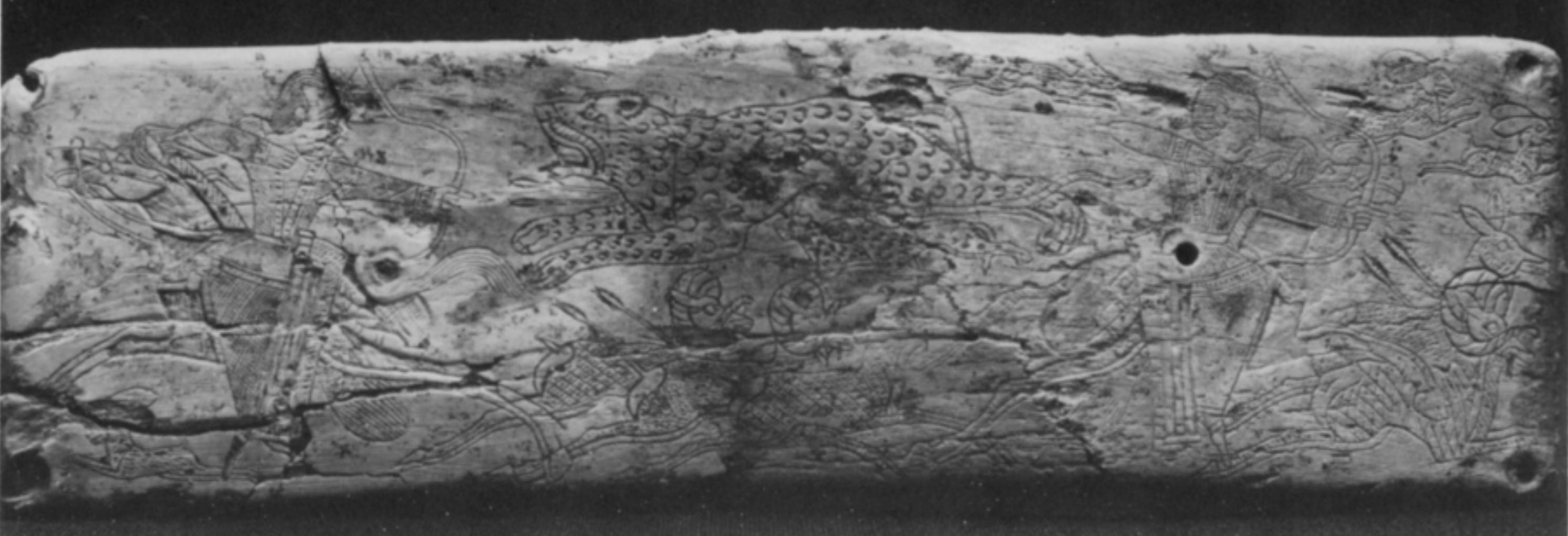Amazon Audible Gift Memberships

Shop Amazon - Create an Amazon Baby Registry
Ivory Casket Panel with a Kushan Bactrian Hunting Scene.
Tajikistan, Takht-i Sangīn. 2nd or 1st century B.C.

Tajikistan, Takht-i Sangīn. Ivory casket-panel. Kushan Bactrian hunting-scene. 2nd or 1st century B.C. Dimensions 216 x 62 x 7mm.
The latest finds of all, which date Votive Store No. 3, were the panels of an ivory casket rendering scenes of Bactrians hunting (Plate VII).
These panels, measuring 216 x 62 x 7 mm., document the general appearance, costume, armament, and harness of the Yueh-chi, or early Kushan, warriors, the conquerors of the Graeco-Bactrian kingdom; besides their breed of horses, riders’ seat in the saddle, and their own fiery disposition — all extremely valuable indications.
Two horsemen at full gallop (one turning towards the rear), are loosing arrows at the quarry.
A female panther, already struck in the chest by two arrows, endeavouring to save her young still strives to leap on the rider.
Beside her are the two cubs. The hunters have killed several mountain sheep with spiral horns, while a fox and two hares are fleeing for safety.
The engraver has worked out the tiniest details.
Indeed the horsemen galloping in opposite directions do not cut the picture in two, since both shoot in the same direction,
and are linked by the running and wounded beasts in the upper, middle, and lower registers.
We note the sharp contrast between the lively, very precise rendering of animals, especially the galloping horses, and that of the horsemen depicted as if seated not on moving mounts, but on palace thrones.
This represents a convention appearing first in this relic, and later traceable on wall-paintings, and other examples of mediaeval Central Asian art. Yet dynamism is the predominant trait of this composition.
The hunting-scene is a favourite motif of Oriental art, extensively varied and developed in Parthian and Sasanian Iran.
The Kushan images of the Takht-i Sangīn casket-panels, like the Khalchayan and Dalverzin sculptures of Kushan princes,55 resemble the coin-portraits of Heraeus.
Thus the panels should be dated after the Yueh-chi conquest of Bactria, towards the end of the 2nd and the beginning of the 1st centuries B.C.
The discovery of Votive Store No. 3 draws attention to two facts.
At Takht-i Sangīn, which guarded the crossing of the Amu Darya, and was neither a capital nor a large city, but an ordinary stronghold, more scabbards of the time of Alexander the Great were found than in the entire Greek world.56
The Greek scabbard-tops and chapes found on different levels, and in various bothroi and votive stores, show that all belong to a comparatively restricted period.
Source: pp.158-159, “The Temple of the Oxus” by B. A. Litvinskiy and I. R. Pichikiyan in The Journal of the Royal Asiatic Society of Great Britain and Ireland No. 2 (1981), pp. 133-167
Back to the smaller image of this Ivory Casket Panel with a Kushan Bactrian Hunting Scene. Tajikistan, Takht-i Sangīn. 2nd or 1st century B.C.


